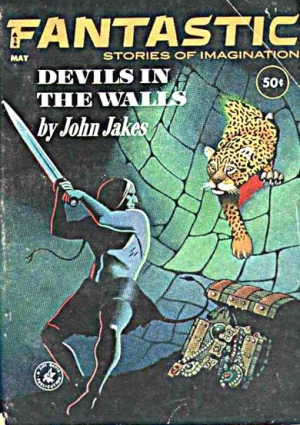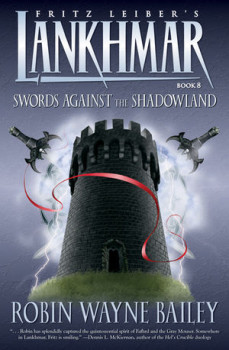Birthday Reviews: Fritz Leiber’s “The Cloud of Hate”

Fritz Leiber was born on December 24, 1910 and died on September 5, 1992.
Fritz Leiber won six Hugo Awards for his novels The Big Time and The Wanderer as well as the novelette “Gonna Roll the Bones,” the novellas “Ship of Shadows” and “Ill Met in Lankhmar,” and the short story “Catch That Zeppelin.” “Gonna Roll the Bones,” “Ill Met in Lankhmar,” and “Catch That Zeppelin” also received the Nebula Award. He won the World Fantasy Award for the short story “Belsen Express” and the novel Our Lady of Darkness. He won his first British Fantasy Award for The Second Book of Fritz Leiber and his second for “The Button Molder.” He won the Geffen Award in 1999 for the Hebrew translation of Swords and Deviltry. The 1962 Worldcon presented him with a Special Convention Award in 1962 for his collaboration with the Hoffman Electronic Corporation for their use of science fiction in advertising.
In 1967 LASFS presented him with a Forry Award. He won a Gandalf Award in 1975 as a Grand Master of Fantasy and the next years received a Life Achievement Award from the World Fantasy Convention. In 1981 SFWA named him a Grand Master and he received a Special Balrog Award. He received a Bram Stoker Lifetime Achievement Award in 1988, and in 2001 he was posthumously inducted into the Science Fiction Hall of Fame.
Leiber is one of the few people who was a guest of honor at multiple Worldcons, having the honor in 1951 at NOLACon I, the 9th Worldcon, held in New Orleans in 1951 and again in 1979 when he was a guest of honor at Seacon ’79 in Brighton, UK. He was the Guest of Honor at the 4th World Fantasy Con in Fort Worth, Texas in 1978. Leiber has most famously collaborated with Harry Fischer on the concept for Fafhrd and the Gray Mouser for the story “Lords of Quarmall.” He has also collaborated with Judith Merril and Fredric Brown.
Leiber first published “The Cloud of Hate” in the May 1963 issue of Fantastic Stories of Imagination, edited by Cele Goldsmith. He included it as the lead-off story in the Lankhmar collection Swords in the Mist and in 1975 it showed up in Sword & Sorcery Annual. When Donald M. Grant published a collection of three Lankhmar stories in Bazaar of the Bizarre, “The Cloud of Hate” was one of the those chosen. It showed up in the Lankhmar omnibus volumes The Three of Swords and Lean Times in Lankhmar as well as Thieves’ House: Tales of Fafhrd and the Gray Mouser, Volume 2 and The First Book of Lankhmar. The story has been translated into Dutch, German, and twice into French, usually for collections of Leiber’s Lankhmar stories.
“The Cloud of Hate” is one of Leiber’s many stories about Fafhrd and the Gray Mouser. The two are serving as watchmen on the evening of a gala celebration of the betrothal of the Lankhmar Overlord’s daughter to the Prince of Ilthmar. They are stationed far from the festivities on a cold, foggy street. The action, however, starts below the streets of Lankhmar, with a mob of five thousand summoning the physical manifestation of hate to flood the streets and, one assumes, attack the Overlord’s party.
